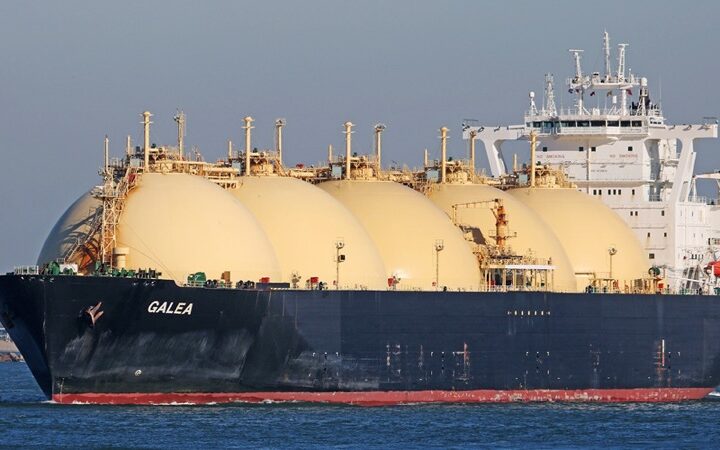.
BY ATHANASIOS ORPHANIDES
A year has already passed since the peak of the worst financial crisis the world has experienced since the Great Depression of the 1930s. This extreme episode of financial instability has led to a severe and truly globalised economic downturn and highlighted the worldwide devastation than can result from a disturbance in just one area of the world with a highly interconnected financial system. The emerging signs of recovery are welcome, though unusually high uncertainty persists. The crisis has revealed a number of weaknesses in the global architecture of financial regulation and supervision as well as gaps in the toolkit available to policymakers for crisis management. An intense discussion on dealing with future crises is essential and it is reassuring to see that it is taking place in various international fora.
There are three areas where I believe progress is needed for promoting financial stability at the global level: international cooperation and convergence; simplicity in regulation; and the role of central banks in promoting financial stability.
The crisis has revealed a general under-appreciation of systemic risks in micro-prudential supervision, and highlighted the need for a more systemwide macro-prudential approach towards supervisory oversight to ensure overall stability in the financial system. By definition, micro-prudential supervisors focus on individual institutions and cannot effectively assess the broader macroeconomic risks that pose a threat to the financial system as a whole. This is a task best suited to central banks.
The recent moves to reinforce macro-prudential oversight internationally are in the right direction. At the EU level, the European Council decided in June, based on the recommendations of the de Larosière Group, to set up a European Systemic Risk Board (ESRB) in order to increase the focus on systemic risk in the EU framework for financial supervision. As with the European System of Financial Supervisors (ESFS), draft legislation on the establishment of the ESRB was adopted by the European Commission [in September]. The main activity of the ESRB will be to identify, monitor and assess potential threats to financial stability and, where necessary, issue risk warnings and recommendations for action and monitor their implementation.
Analytical, statistical, administrative and logistical support for the ESRB will be provided by the European Central Bank, also drawing on technical advice from national central banks and supervisors. At the international level, the envisaged closer cooperation between the IMF and the Financial Stability Board (FSB) is expected to contribute towards better surveillance of macro-prudential risks in the international financial system. The ESRB is also expected to liaise effectively with the IMF and the FSB.
AUTHORITY TO THE FED
In the United States, the US Treasury recommends that the responsibility for macro-prudential supervision be assigned to the Federal Reserve. Furthermore, the legislative proposals released by the Treasury last July to address systemic risk give the Fed the authority to regulate and supervise all large interconnected financial firms deemed to be systemically important.
There are important informational synergies between micro-prudential supervision and systemic risk analysis that make this proposal quite attractive. Central banks can benefit from and rely on extended access to supervisory information and intelligence, especially on systemically relevant intermediaries, in order to appreciate risks and vulnerabilities of the financial system as a whole.
In addition, in the area of crisis management and resolution, the financial market turmoil has showed the importance of close interaction between the central banking and supervisory functions, in particular when the provision of Emergency Liquidity Assistance (ELA) becomes necessary. The activation of the ELA requires speed and detailed information regarding the conditions of vulnerable financial institutions seeking assistance. In this regard, a supervisor has greater likelihood of possessing institution-specific information, which is vital for a central bank to perform effectively the role of "lender of last resort".
Indeed, many central banks have found the presence of financial supervision, especially banking supervision, under their aegis and the information flows within the same organisation as essential in enabling them to deal with the current crisis. This has reinforced the arguments in favour of combining the central banking and supervisory functions under one roof.
INDEPENDENCE OF SUPERVISION
Bringing micro-prudential supervision under the umbrella of the central banks may also be the most effective manner for preserving the institutional independence of supervision – an important defence against political pressures and the threat of regulatory capture. Invariably, central banks are among the most independent institutions in democratic societies as a high degree of central bank independence is required to ensure monetary stability. On the other hand, the concern that adding micro-prudential supervision may jeopardise a central bank’s independence and compromise its ability to pursue its price stability objective is an argument against bringing micro-prudential supervision under its aegis. This is certainly a serious concern that makes the central banker’s job more difficult. However, I believe that the social benefits emanating from the synergies between micro- and macro –prudential supervision outweigh the potential risks.
Another argument in favour of placing micro-prudential supervision under central banks in countries where this is not already the case, is the excellent international cooperation among central banks, as demonstrated during the present crisis. In light of this excellent cooperation, the micro-prudential supervision of systemically important institutions by the central banks would enhance stability in the international financial system.
For a central bank to be successful as a macro-prudential supervisor, it needs to be provided with the appropriate tools. In general, a central bank does not face a trade-off between price stability and financial stability. Rather, most of the time these two goals reinforce each other. Price stability prevents the arbitrary redistribution of wealth and income between borrowers and lenders which could result from unanticipated price movements and lead to financial stress and potential default. In addition, anchoring inflation expectations results in the stabilisation of economic activity and avoidance of debt-deflation spirals. Conversely, financial stability enhances the effectiveness of monetary policy by facilitating the monetary transmission mechanism. However, there may be occasions when monetary policy directed at preserving price stability may not suffice to minimise financial stability risks. An example would be an episode of persistently high credit growth in an environment of price stability. Under such circumstances, the central bank should, in addition to its interest rate instrument, have at its disposal macro-prudential levers with which to contain the risk of a potential financial disturbance. These could comprise the power to vary capital requirements, leverage ratios, loan-to-value ratios, margin requirements and so forth.
CRISIS AVERTED?
Could the current crisis have been averted if this macro-prudential framework had been in place a few years earlier? Such counterfactual thought experiments are very difficult to evaluate with precision, but the following example may illustrate how history might have differed if the Federal Reserve had broader supervisory powers half a decade ago.
The example concerns Fannie Mae and Freddie Mac, the two housing-related government sponsored enterprises (GSEs) in the United States that, according to Calomiris (2008), played a pivotal part in the crisis. In brief, these two GSEs represented systemically important institutions that could have been under the supervision of the Federal Reserve if it had appropriate regulatory powers, as defined by the Treasury Report. These GSEs were allowed to expand their portfolios of assets virtually without limit and with an implicit government guarantee, despite the objections of the Federal Reserve.
As then Chairman of the Federal Reserve Alan Greenspan stated in testimony before the US Senate in April 2005: "We remain concerned about the growth and magnitude of the mortgage portfolios of the GSEs, which concentrate interest rate risk and prepayment risk at these two institutions and makes our financial system dependent on their ability to manage these risks… To fend off possible future systemic difficulties, which we assess as likely if GSE expansion continues unabated, preventative actions are required sooner rather than later."
Unfortunately, these warnings went unheeded and the systemic failure that had been a source of concern at the Federal Reserve materialised. In retrospect, if the Federal Reserve had already been the systemic regulator and had the appropriate authority, it could have taken the necessary action and the failure may have been averted.
This example also illustrates that to assure financial stability it is not sufficient for the central bank to have the responsibility to identify risks and to issue warnings. The central bank must also have the authority to enforce corrective action.
In conclusion, the financial crisis has highlighted significant weaknesses in the international financial regulatory and supervisory framework as well as the need to strengthen the resilience and oversight of the financial system. Although we have avoided the worst, difficult challenges still lie ahead. Incorporating the lessons from the crisis we should strive to build a more robust global financial regulatory and supervisory framework.
The worst of the crisis may now be behind us. We should not allow complacency to stand in the way of making progress towards a more robust global financial order.
Highlights from remarks by Athanasios Orphanides, Governor of the Central Bank of Cyprus, at the Twelfth Annual International Banking Conference "The International Financial Crisis: Have the Rules of Finance Changed?" held in Chicago.







